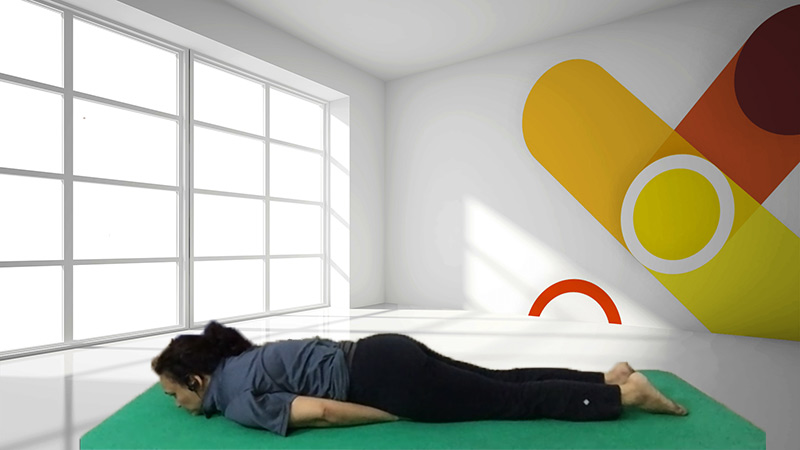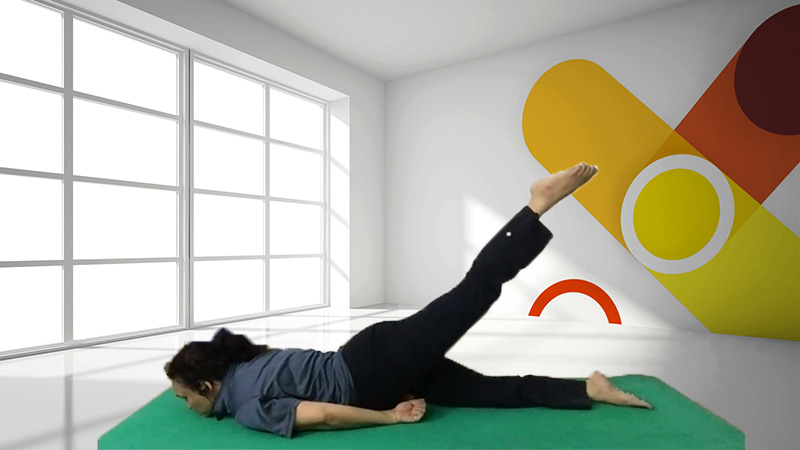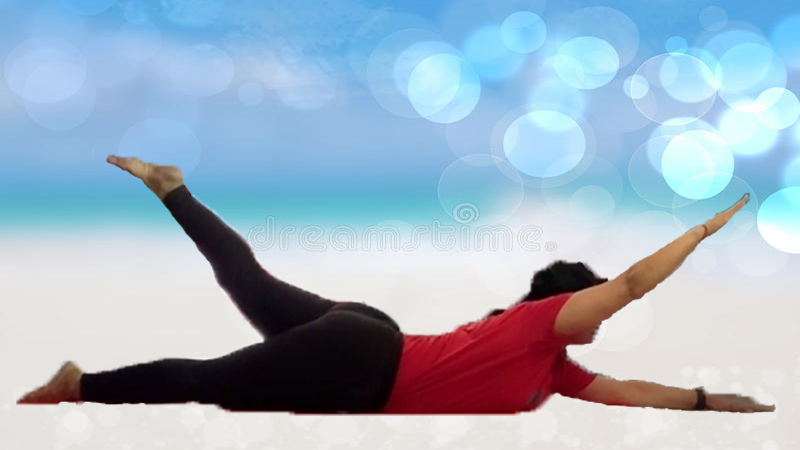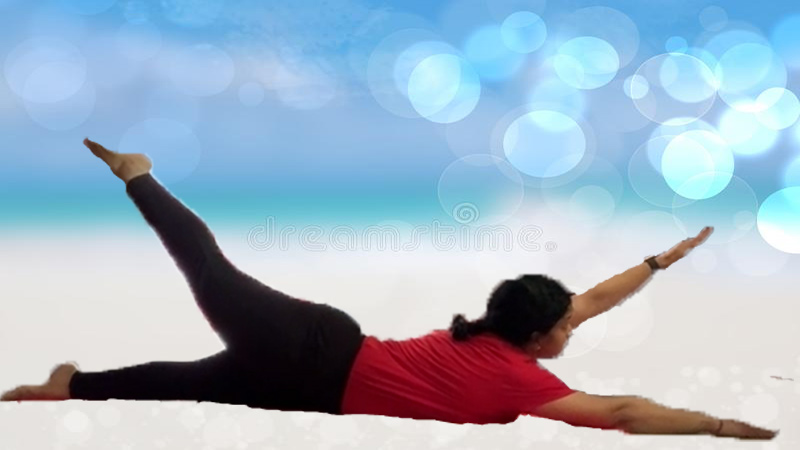Table of Contents
Ardha Salabhasana (Half Locust Pose) Steps & Benefits
Ardha Salabhasana is an excellent Yoga Pose for back pain and pelvic organs. It is made up of three words Ardh, Salabh, and Asana, in which the word “Ardha” means ‘half’, “Salabh” means ‘locust’, and “Asana” means ‘posture’ and hence the name Ardha Salabhasana or Half-Locust Pose. Ardha Salabhasana can be considered as a preparatory pose for Salabhasana. The final pose of Salabhasana resembles a feeding locust, with the head lowered and tail raised up. Locusts are known for their energy and ability to take great leaps. Ardha Salabhasana, one of the asanas for lower back stretches, helps release tension in the pelvic area.
Ardha Salabhasana Steps
- Spread a Yoga Mat and Lie flat on the stomach on it, with the chin on the floor.
- Stretch your chin slightly forward.
- Bring your hands under the thighs with palms facing downwards or hands clenched.
- Keep both your legs straight throughout the practice.
- Breathe in and raise your left leg as high as possible, using the back muscles.
- You should keep your right leg straight and in contact with the floor.
- Ensure that the hips stay on the ground, and the pelvis remains in a neutral position.
- Become aware of the pressure on your lower back and the lower abdomen.
- Stay in the posture for as long as possible without strain and retaining the breath inside.
- If you hold the final position for a longer period, keep the breathing normal.
- Exhale while lowering your leg to the starting position.
- Repeat the same process with your right leg.
- This is one round.
- Practice 2 rounds.
- If the dynamic practice is done, then you can raise and lower your legs on the inhale-exhale cycle.
Ardh Salabhasana Practice Note
The left leg should be raised first in order to apply pressure on the right side of the abdomen. This will help massage the ascending colon of the large intestine. Raise the right leg next, which will later put pressure on descending colon. This is in support of the direction of the intestinal peristalsis.
Ardha Salabhasana variation
- Lie flat on the stomach, with your chin on the floor.
- Stretch both your arms above the head, keeping them parallel to each other.
- Keep the arms and legs straight throughout the practice.
- Inhale and raise your left leg, right arm, and head as high as possible simultaneously.
- Point the toes back, and stretch your fingers away from the body.
- The left leg should be stretched backward and the right arm stretched forward in the final position.
- Keep your head raised and keep on looking forward.
- Stay in the posture for as long as possible without straining and retaining the breath inside.
- If the final position is held for a longer period, the breathing can be kept normal.
- Exhale while lowering the leg, hand, and arm to the starting position.
- Repeat the same procedure with the right leg and the left arm.
- This is one round.
- Practice up to 2 rounds.
- If the dynamic practice is done, then raise and lower the arms and legs on the inhale-exhale cycle.
Ardha Salabhasana Benefits
- Ardha Salabhasana massages the pelvic organs and improves blood circulation in the pelvic and lower back areas.
- It is a very good Yoga Pose for people suffering from lower back pain and even sciatica pain.
- Ardha Salabhasana, one of the best back exercises, strengthens the lower back muscles.
- The asana releases tension in the pelvic area.
- Ardha Salabhasana strengthens and tones the thighs and buttocks.
- Ardha Salabhasana is good for people suffering from constipation.
- It improves the flexibility of the spine.
- It strengthens the shoulders and neck muscles.
- The Ardha Salabhasana is good for people recovering from a slipped disc.
- Ardha Salabhasana variation is recommended for beginners with weak and stiff backs.
- The variation of Ardha Salabhasana helps to tone the back muscles and stimulate the lower back nerves.
- The variation also gives a strong diagonal stretch in the body.
Ardha Salabhasana Sequence
In a Yoga Session, Bhujangasana, Salabhasana, and Dhanurasana are done in order as written. Ardha Salabhasana can be practiced after Bhujangasna and just before Salabhasana.





